Civil aviation is a vital sector for economies, enabling international trade and tourism, generating millions of jobs directly, and millions more indirectly. In this analysis, the civil aviation sector consists of the air transport of both passengers and freight, along with incidental and supporting activities including the operation of airports and cargo handling. Consistent with the ILO’s grouping of sectors, aviation manufacturing is not included. Direct employment is estimated at 11.3 million jobs worldwide, including in airports (airport management, maintenance and operations) with airlines and air navigation service providers. The civil aviation workforce spans a range of occupations, from pilots and cabin crew, to ground staff, air traffic controllers, safety technicians, and aircraft mechanics and repairers.
Structural change and employment patterns in a highly cyclical industry
Many trends have shaped the industry over the years, including privatization, deregulation, and the emergence of low-cost carriers (LCCs). In some cases, the effects of high competition and pressure to lower costs have been passed on to workers, and reflected in indicators of employment stability and job security, wages, and working hours. Until today, however, the ownership structure and control of airlines varies significantly across countries, and this is reflected in employment patterns. In the last year for which data are available, the public share of employment in the ‘travel attendants, conductors and guides’ occupational group was low in European countries like France (9 per cent) and the United Kingdom (11 per cent) where increased private sector participation has taken place, but quite high in some other countries, including in Central and Western Asia (e.g., 80 per cent in Georgia), Eastern Europe (e.g., 56 per cent in Poland and 50 per cent in Slovakia), and Northern Africa (approximately 62 per cent in Tunisia and 46 per cent in Egypt). It was also very high in small states like the Marshall Islands, Tonga, and Brunei Darussalam. Privatization has not only had a significant impact on airlines, but also airports, where shared ownership between private and public actors is also widespread.
In addition to longer-term trends, the cyclical nature of the industry is also reflected in employment patterns. Thus, we observe that employment in civil aviation subsectors rises and falls along with output indicators, such as the number of passengers, volume of freight, and number of carrier departures. Indeed, employment fluctuations are often more pronounced than changes in the related output indicators.
The cyclicality of the industry has implications as well in terms of contractual arrangements. For instance, airlines use many types of employment arrangements, including intermediary organizations like temporary work agencies. In our data, we do not find any correlation between the public share of employment (among travel attendants) and the temporary share of employment in the air transport industry. This may be due to other structural elements that we cannot examine from the data at hand, such as the relative importance of employment in LCCs, where the share of workers with a direct employment contract tends to be considerably lower.
The COVID-19 pandemic highlighted both the civil aviation sector’s importance and its vulnerabilities…
During the COVID-19 pandemic, employment changes were actually less significant than output changes. The sector was one of the worst hit by the pandemic and where deployed, some job retention schemes helped limit net job losses to some extent. Thus, high employment volatility in the industry is illustrated not only by fluctuations in employment levels, but also in the composition of employment. For instance, in the early stages of the pandemic, temporary workers in the passenger air transport industry bore a disproportionate share of job losses in some countries (e.g., Austria, Mexico, and the Philippines) in 2019 and 2020, but temporary employment recovered faster initially as employers resorted to temporary workers to fill in labour shortages. But in several countries, the share of temporary workers in the industry’s employment declined again in 2022. These trends indicate that the change in net employment in the industry largely conceals the turbulence in the industry. Challenges surrounding attraction and retention of aviation personnel may derive from a variety of factors, including the cost of training, certification and reskilling, stereotypes, bias, the perceived reputation with respect to environmental footprint and legal barriers.
Wage trends in a competitive industry
In many countries with available data, the cyclicality of the industry is also reflected in the nominal monthly earnings of workers, which stands in contrast with a steadier growth of the national average nominal wage. The cyclicality in earnings in the sector can be observed at the occupational level, and therefore is not attributable to a shift in the composition of employment. Indeed, in some European countries with available time series, we find that nominal earnings in key occupations had very limited growth over the past decade (e.g., travel attendants and travel stewards in France and in Switzerland) or were even on the decline (e.g., for aircraft pilots and related professionals in Switzerland). These trends are not universal however, as aircraft pilots and related professionals in Brazil had rapid nominal wage growth until the pandemic hit. The significant impact of the pandemic is reflected in a major decline in monthly earnings for key civil aviation occupations across many countries.
Gender pay gaps and occupational segregation
Occupational segregation in the civil aviation has persisted over time, with a very limited share of women employees in some occupations like aircraft pilots and related associate professionals (between 0.6 and 21.4 per cent among countries with available data), aircraft engine mechanics and repairers (between 0.6 and 6.1 per cent), and very high shares in other occupations, namely travel attendants and travel stewards (up to 81 per cent) and travel consultants and clerks (up to 85 per cent).
Occupational segregation in the civil aviation sector is accompanied by pay differences between men and women. Specifically, in nearly all countries with available data, women who are employed as aircraft pilots and related associate professionals were paid less (approximately 75 per cent less in Brazil and the Philippines, and 20-25 per cent less in Colombia, France, Tunisia, and the United Kingdom) than men in the same occupations in the latest year for which data are available. Only in Mexico, were women paid more than men in this occupation, but this could be partly due to their significant underrepresentation in this occupation (i.e., less than 1 per cent of Mexico’s aircraft pilots and related associate professionals are women). Globally, many barriers exist for female aviation professionals. The International Civil Aviation Organization (ICAO) has issued a Call to Action to start moving from aspirations to achieving gender equality in the sector.
Available data for the air traffic controllers and air traffic safety electronics technicians, where women represent a small share of the workforce, indicate that pay gaps vary across countries and over time in these occupations. Similarly, women aircraft engine mechanics and repairers were paid more than men in Mexico and the Philippines, and less than men in all other countries with available data for this occupation (Brazil, Colombia, El Salvador, and the United Kingdom). In both Mexico and the Philippines, the pay gap was reversed only recently, in 2018.
For the travel attendants and travel stewards’ occupation, where the share of women employees tends to be high, pay gaps also vary across countries and over time. In 2022, women travel attendants and travel stewards earned less than men in countries like Colombia and the United Kingdom but earned more than men in Brazil and Thailand. In the latter two countries, however, the pay gap in favour of women had not always existed for this occupation. Specifically, in Brazil, men travel attendants and travel stewards earned on average more than women until 2019, but the pay gap was reversed during the pandemic. Similarly, in Thailand, the pay gap for this occupation, which was in favour of men in 2014, reversed since 2015 and expanded significantly in favour of women during the pandemic. However, this may be due to heavier job losses among lower-paid female employees, who may also have more precarious contractual arrangements.
Among travel consultants or clerks, women earn more than men in Southeast Asian countries (Philippines, Thailand, and Viet Nam) and also in South Asian countries (Bangladesh and Pakistan) with available data. The South Asian countries where overall female labour force participation is low are the among the few countries where women represent only a small share of this occupation’s workforce. Among transport clerks, where women represent anywhere from 5 to 45 per cent of the workforce, women were paid less than men in 11 out of the 12 countries with available data.
Uncertain trajectories
In the wake of the pandemic, the civil aviation sector continues to experience a slow and uneven recovery. Workforce challenges emerged across various occupational groups during this period and this has negatively affected the industry’s recovery. Despite marginal progress in a few countries, much remains to be done, not only in addressing gender inequality and pay gaps but also in navigating the impacts of rapid technological changes and ambitious decarbonization targets. These changes could reshape both employment patterns and the very nature of work in the sector. Indeed, the findings discussed above echo the insights from the ILO’s recent report ‘Towards a Green, Sustainable and Inclusive Recovery for the Civil Aviation Sector’, specifically, that “understanding the cyclicality of the sector, coupled with the aspirational goals in terms of climate change, constitutes an important step towards building resilience and identifying opportunities to shape recovery”.
Author
-

Souleima El Achkar
Souleima is an economist and labour market information specialist, with expertise in skills development systems. Since 2010, she has been working as a consultant on various projects for the ILO, Asian Development Bank and the World Bank.
View all posts
